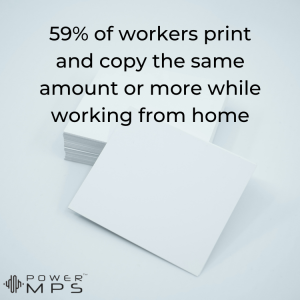This Week in the Copier Industry 15 Years Ago
The Second Week in April 2007
Oh the memories, seems it was 15 years ago when Xerox pulled the trigger on the Global purchase. Time really does change everything
Oh the memories, seems it was 15 years ago when Xerox pulled the trigger on the Global purchase. Time really does change everything
Sponsored by
I'm now over 50 videos on our YouTube channel. Much of the content is related to sales for our industry and there's additional content that shares our collective knowledge with solutions that can help us sell more. Hoping you subscribe and click the content that you like. New content drops every week!
Print4Pay Hotel YouTube Channel
Sponsored by
I finished a yesterday about ending the madness with the supply chain issues with copiers. The match is simple, the idea is creative and everyone wins. Better Call Art "Stop the Supply Chain Madness"
click image for web link

I will not name names, I will not name names.
OMG, it is so tempting to tell everyone. Well I could always name names with private messaging ![]()
I will tell you a story about about a third party print supplier in our industry. For me that supplier should have been more client focused and more driven to solving a print issue rather than to tell the client there is no solution they could offer.
Now the print issue was not with the device that they support, but rather with the print that came from the print device. The print device did what is was suppose to do without any issues, in addition there were no problems with the print quality. Sounds strange right? Stay tuned..
The client bought six of these print devices over a two year period. All was working well...
It was about 18 months later when the clients customer and then a couple of more customers complained to the customer that the prints they received was producing a ghosting image. Okay, so keep in mind that our clients customers was running the pre-printed documents back through their A4 MFP. The customers clients stated every print was not usable since the image was doing the double image (ghosting)..
Interesting because when we originally entertained the client with the print solution and all of the technical data. Our third party print supplier never mentioned that there could or might be some issues at some time with some laser printers ghosting the image.
Of course the issue was brought to the third party print provider. The issue was addressed by an Engineer and exclaimed that they would get back to the client with something soon. This went on for weeks, during this time the client was afraid that other customers were having the same issues and not telling him. Thus he was afraid he could be losing business and not even know it.
After a month of no response to the client, the third part print provider wrote a beautiful letter to the client stating there is nothing they go do. Seems like the Engineer had no issues to correct the product.
I'm going to make a long story short now. At an event two seasoned print pros thought over the problem and applied their print knowledge of the laser print process. We all know that in the print properties we can slow the speed of printer and in some instances the fuser temp is increased to print on thick paper. He took the opposite and thought about print settings for thin paper. We both agreed that the fuser would not get as hot with the thin paper setting. Thus this might stop the image from ghosting.
It was a theory, but at least it was something. The client agreed to buy two of the A4 printers that were having the issues. I was on site for the testing and our theory worked with changing the print setting to "thin paper mode" in the printer driver.
As I stated I don't want to name names, but I am proud that two seasoned pro's (more him than me) figured out a solution to keep the client happy. Yet, I am puzzled by the third party print provider did not think simple solution but walked away.
-=Good Selling=-
My buddies from EveryonePrint having a blast while performing demos with cloudprint

The slow move to remote work before 2020 was primarily due to concerns about security. Companies understood that securing virtual workspaces required additional investments in hardware and technology beyond the usual firewalls and processes they could implement directly on their internal servers. And at the time, there was no justification for investing the money in creating the infrastructure to facilitate remote work beyond the occasional salesperson’s laptop.
When the pandemic response of early 2020 took full effect, businesses scrambled to figure out ways to continue operating outside the main office. In many cases, thoughts of security were secondary to ensuring employees could continue working. Once the dust settled, IT began implementing the firewalls and secure point-to-point connections required to regain the standard protections for company information. But, as we continue the slow march out of pandemic response, one major business component is still seen as a security risk – printing.
Most businesses (90%) don’t know how many printers they have in their central offices. But the real issue isn’t what machines are sitting at headquarters; the growing problem is the number of home printers used for company printing. When these printers are connected to company computers either directly into a USB or through the same wi-fi network, they pose a potential point of attack to the company’s virtual network.
The first and largest vulnerability is having an unsecured, internet-enabled machine connected to a company computer. Bad actors could hack into the local wi-fi and, using the shared connection, gain access to the printer. The link between the printer and the company computer provides a pathway to bypass any VPN or security. And, once in the employee’s computer, hackers can easily view emails, browse computer files, and even gain access to the business’s primary network.
The second vulnerability is the information stored on the hard drive of even the most inexpensive consumer printer. These hard drives store the images of queued documents for a varying degree of time. As a result, hackers who gain access to an employee’s wi-fi can potentially access any company information included on print jobs sent to that consumer-grade machine.
The simplest solution to eliminating the risk of company information on personal printers is to lock down what equipment can be linked to the company computer. If the employee can’t directly or remotely connect their home printer, the business network is safe, and company information cannot be transmitted to the printer’s hard drive.
 But employees need to be able to print. During the 2020 shutdown, over half of workers (59%) continued to print and copy the same amount or more while working from home. The drive to print certain documents can push employees to find workarounds even when locked out of using the home printer. One method is to send work documents to private email or cloud accounts. Those documents are then accessed from less secure personal computers and sent to consumer-grade printers.
But employees need to be able to print. During the 2020 shutdown, over half of workers (59%) continued to print and copy the same amount or more while working from home. The drive to print certain documents can push employees to find workarounds even when locked out of using the home printer. One method is to send work documents to private email or cloud accounts. Those documents are then accessed from less secure personal computers and sent to consumer-grade printers.
Employees who work a portion of their time in the main office may have a better option, such as printing remotely to the printers at headquarters. However, if the main printer(s) immediately print everything in their queue, there is the risk of documents being picked up by the wrong employees. In addition, there is the risk of office visitors or other departments accidentally viewing information that does not apply to them or should not have been viewed.
So, remote and hybrid employees need to print. Companies need to maintain security. Unfortunately, the two requirements seem to be at complete odds. The risks consumer printers pose as an entry point for bad actors is dangerous enough. The possibility of criminals using a back door to view sensitive company information or, worse, gaining access to the company’s internal systems is undoubtedly a daunting prospect. But taking the capacity for safe printing away from employees can affect job performance or lead to other potentially risky behaviors.
The best solution is to select an appropriate compromise in networked printers. Small format office-grade printers such as A3 and A4 models can provide fast and efficient printing for the remote workforce. But, unlike consumer printers, they have additional security functionality which allows for document encryption, port security, and remote monitoring.
In addition to hardware-level measures, these small-footprint networkable machines can use cloud applications or VPN – the same as or similar to what is used to lock down other company hardware. Both options continue the point-to-point protection required to make remote printing a safe option for at-home and hybrid workers. And, just like the business’s laptop and desktop computers, fully supported office-grade networked printers have regular security software updates to counteract new digital attack strategies and detected vulnerabilities.
Employees continue to value printing as an essential aspect of their everyday tasks. Innovative businesses will find ways to facilitate the needs of their people. Small format, office-grade, networked printers can be a viable solution for the discerning company as the configuration and idea of the “traditional” office continues to reshape for the post-COVID future.
see attached file

click image for web link

click image for web link

Access to this requires a premium membership.
A Premium Membership can carry you to the top of the sales ladder!
Premium Membership Includes:
Follow the link on the forums to get your Premium Membership. If you're interested in a lifetime membership please send me an email arthurkpost@gmail.com and we'll send you a pay pal invoice of $399 of a LIFETIME Print4Pay Hotel membership.